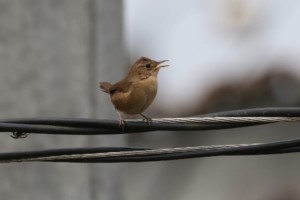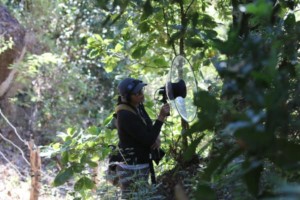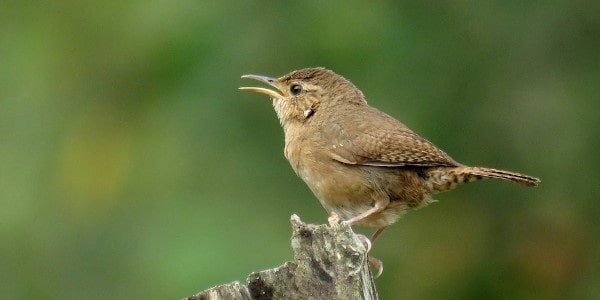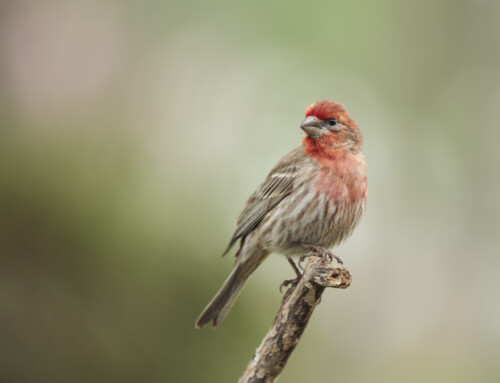LINKED PAPER
House Wrens Troglodytes aedon reduce repertoire size and change song element frequencies in response to anthropogenic noise. Juárez, R., Araya-Ajoy, Y., Barrantes, G. & Sandoval, L. 2020. IBIS. DOI: 10.1111/ibi.12844. VIEW
Noise produced in cities by traffic, factories, and other human activities affects the vocal communication of birds living in those cities because it masks their vocalizations (i.e., prevents them from hearing certain sounds) and affects the learning capacities of individuals because they need to hear themselves and other individuals of their own species to learn correctly their song. Thus, in noisy places like cities, birds may have difficulty learning their song when they produce songs at frequencies that overlap with anthropogenic noise. We investigated if high noise levels reduce the number of song elements in the repertoire of House Wren, Troglodytes aedon, a common species in American cities. A song element is a continuous sound, the equivalent of the sound that we produced when saying any letter of our alphabet. Also, we investigated whether the proportion of elements that do not overlap with noise (i.e. elements with frequencies above 3 kHz, which is the highest frequency of noise in cities) were more common in sites with high noise levels.

Figure 1 House Wren advertising its urban territory © John van Dort
We studied the House Wren because male songs play an important role in mate choice, pair communication, and in male-male competitions (dos Santos et al. 2016). Most of House Wren song elements are produced at frequencies between 0.80–5 kHz, partially overlapping with anthropogenic noise (Redondo et al. 2013). Additionally, House Wrens develop songs by hearing other individuals of the same species and expand their repertoire after the first breeding season by including new elements in their songs from tutors (Sosa-López & Mennill 2014a). In Costa Rica, House Wrens sing throughout the year, but more frequently during the prolonged breeding season (March to October; Skutch 1953) and inhabit open or semi-open habitats in rural and urban areas where anthropogenic noise levels vary considerably (Redondo et al. 2013). All these characteristics make them an ideal species for analyzing the effect of noise on the repertoire of elements and on the variation of proportion of low and high frequency elements.

Figure 2 Roselvy recording birds in an urban environment © John van Dort
We followed and recorded ringed birds at four sites in the Costa Rican Central Valley that varied in noise levels and urban development during two consecutive breeding seasons (April-June 2015/16), between 5:30-7:30 hours when this species is most vocally active. We recorded 14,826 songs from 29 males (total recording time 104 hours). We recorded each male during two days per year and we simultaneously measured anthropogenic noise levels every 10 minutes inside each male’s territory during the recording period.
We found that noise affected the House Wren songs. Males inhabiting noisy territories had smaller repertoires than males inhabiting quiet territories. We also found that males produced smaller repertoires on noisier days, suggesting that this species may shorten its repertoire size according to noise level, indicating high levels of plasticity to sing. In addition, individuals inhabiting the noisiest location showed a tendency to include more high-frequency elements in their songs. This allowed them to be heard above the noise. Noisy environments could become a selecting factor that may result in repertoire size reductions of birds, as has presumably occurred in Great Tits and White-crowned Sparrows.

Figure 3 Relationship between noise and elements repertoire size of House Wren songs at four main locations that vary in noise levels, from high to low
Our results suggest that noise may have a negative impact on communication, and likely on the reproduction of House Wrens, because males cannot communicate effectively and females have difficulty selecting a mate based on the quality of the song. Therefore, to promote conservation of songbirds it is necessary to develop strategies to ameliorate the noise impact. For example, in cities the primary roads should be located away from remaining natural habitats, and these habitats should be surrounded by either man-made or natural barriers that reduce noise, like hedgerows. These strategies will reduce the impact of anthropogenic noise on birds and other animals that communicate vocally.
The current COVID19 situation provides a unique opportunity to study the effects of reduced anthropogenic noise in normally noisy environments, because the lockdown has produced changes in noise patterns, i.e. it has transformed noisier places in to quieter ones that allow animals to better communicate acoustically. For example, low frequency sounds are better transmitted now that they are no longer masked by noise, including during early morning rush hour, when many species are actively trying to communicate. This unprecedented phenomenon opens a window for further investigations to understand the adaptations of animals in cities.
References
Redondo, P., Barrantes, G. & Sandoval, L. 2013. Urban noise influences vocalization structure in the House Wren Troglodytes aedon. IBIS 155: 621–625. VIEW
dos Santos, E.B., Llambías, P.E. & Rendall, D. 2016. The structure and organization of song in Southern House Wrens (Troglodytes aedon chilensis). J. Ornithol. 157: 289–301. VIEW
Skutch, A.F. 1953. Life history of the southern house wren. Condor 55: 121–149. VIEW
Sosa-López, J.R. & Mennill, D.J. 2014a. Vocal behaviour of the island-endemic Cozumel Wren (Troglodytes aedon beani): song structure, repertoires, and song sharing. J. Ornithol. 155: 337–346. VIEW
Image credit
Featured image: House Wren, Troglodytes aedon © John van Dort




